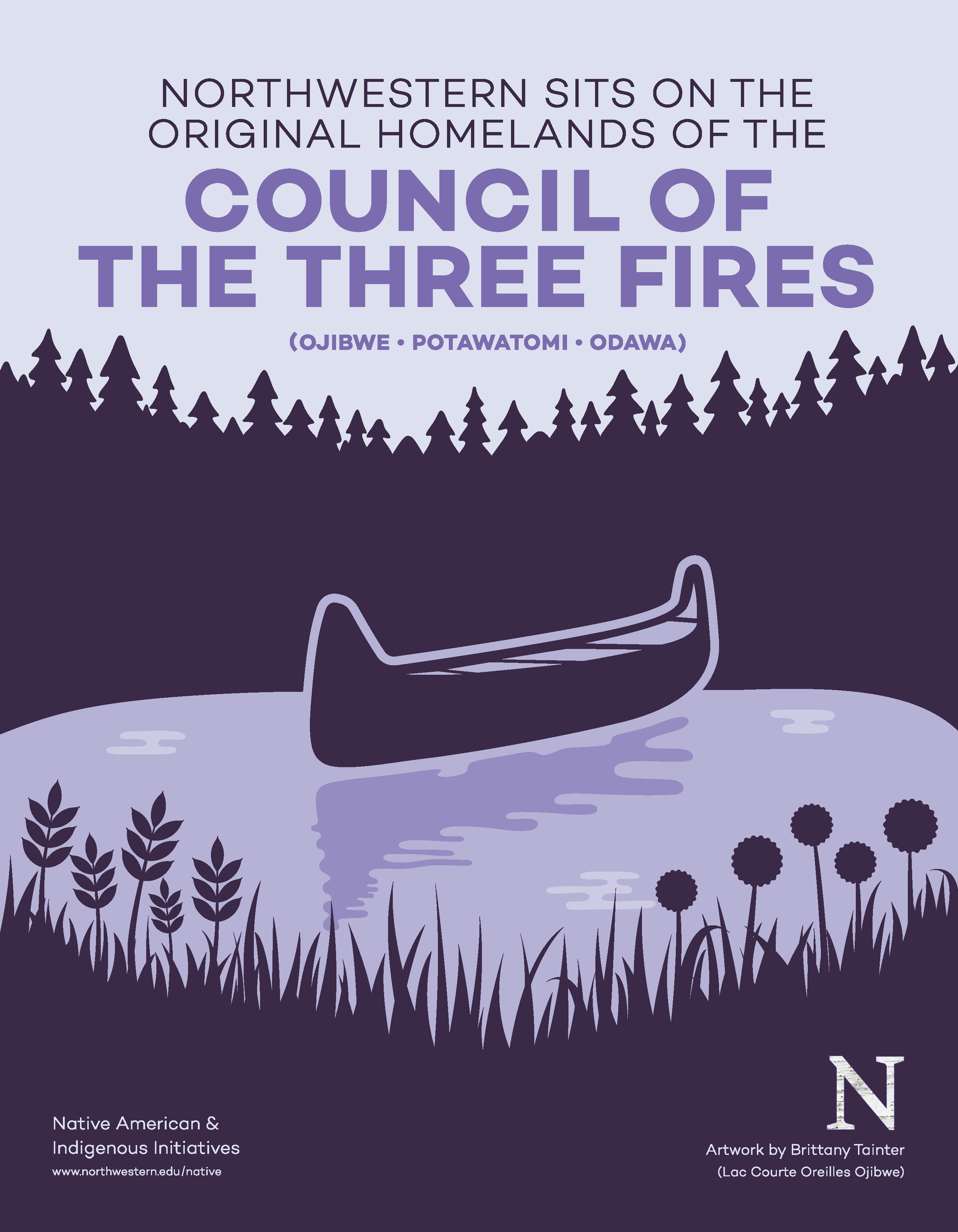Land Acknowledgment

Northwestern is a community of learners situated within a network of historical and contemporary relationships with Native American tribes, communities, parents, students, and alumni. It is also in close proximity to an urban Native American community in Chicago and near several tribes in the Midwest. The Northwestern campus sits on the traditional homelands of the people of the Council of Three Fires, the Ojibwe, Potawatomi, and Odawa as well as the Menominee, Miami and Ho-Chunk nations. It was also a site of trade, travel, gathering and healing for more than a dozen other Native tribes and is still home to over 100,000 tribal members in the state of Illinois.
It is within Northwestern's responsibility as an academic institution to disseminate knowledge about Native peoples and the institution's history with them. Consistent with the University's commitments, Northwestern works towards building relationships with Native American communities through academic pursuits, partnerships, historical recognitions, community service and enrollment efforts.
About the design
Artist Statement
Long before skyscrapers and more recent city life spread across the region, these Indigenous Nations have been in relationship with the land and, with that, carry responsibilities. As a small snapshot of life and the landscape then, you can see a canoe resting along the shore of Lake Michigan, surrounded by pine trees. Canoes, made often times using birch bark, are representative of the historic and sustained presence of Indigenous peoples in the Great Lakes area, prior to the arrival of settlers and continued to this day. Adorning the lake are wild rice and wild onion, both of which hold a special place within each tribe. The onion plant is native to the Chicago area and can be attributed to its naming. Wild rice is a sacred plant and food to Great Lakes tribes, tied to migration stories. Wild rice, which is actually a grain and not a rice, is highly nutritious but has been threatened by fracking, pipelines, mines, and proposed genetic engineering. Both plants represent this area, food sovereignty, subsistence, and treaty rights.
Today, Indigenous peoples continue to protect and remain in relationship with these relatives and will do so until the end of time. It is vital to honor these beginnings and recognize the ongoing dedication and importance of Indigenous culture within our communities and within the land that we gather, live, learn and work on.
Artist Biography
Western Wisconsin based artist, Brittany Tainter, is a member of the Lac Courte Oreilles Tribe of Ojibwe. Originally starting her career as a Graphic Designer, her work now crosses many disciplines and often references Indigenous identity and place.
She owns Giizhig Design Company, a small creative agency that offers graphic design, copywriting, and other services. Since starting the business in 2017, she has expanded her services and now creates and sells custom beadwork. Learn more by visiting www.giizhig.com
Resources
Visit this page for more resources on Land Acknowledgments at Northwestern